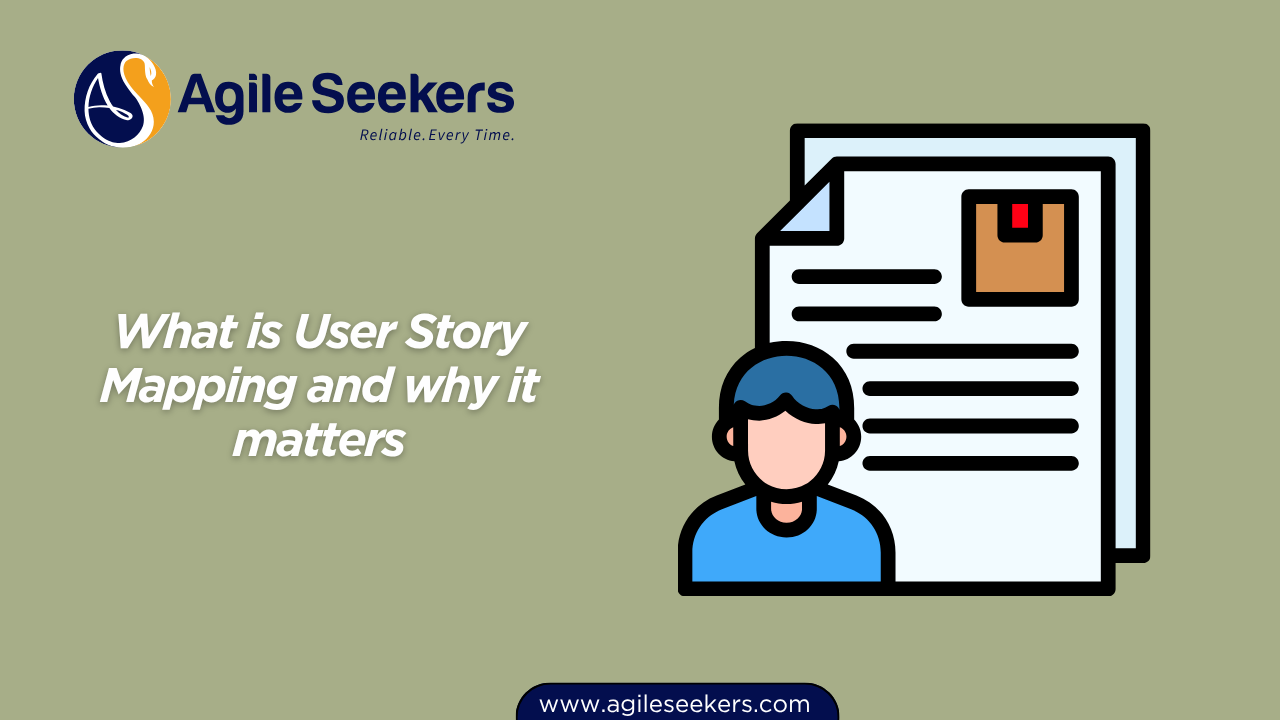What is User Story Mapping and why it matters

User Story Mapping helps teams understand how users interact with a product from start to finish. Instead of listing features in a flat backlog, teams organize work based on the user journey. This shifts conversations from output to outcomes. The practice was shaped and made popular by Jeff Patton, and you can explore more about his viewpoints through resources available on his website, such as this overview.
Teams that adopt User Story Mapping gain clarity. Instead of features becoming siloed tasks, the team sees the product as the user experiences it. This builds alignment, reduces confusion, and helps everyone focus on delivering meaningful value rather than just pushing work through a pipeline.
What User Story Mapping Actually Is
Think of a user story map as a visual narrative of the user journey. You start with the user’s goal, then map the key activities they take, and fill in the smaller user stories beneath each activity. The result is a structured, layered understanding of:
- The overall workflow
- The specific tasks users perform
- What is essential vs. optional
For professionals who work at the enterprise scale, this clarity forms a foundation for leading agile adoption and transformation. Programs like the Leading SAFe Agilist Certification help teams and leaders apply this thinking to large product portfolios.
Why User Story Mapping Matters
1. It Builds Shared Understanding
Teams often assume they share the same understanding of user needs, but misunderstandings surface later during development. A story map makes discussions visible and concrete. Once visualized, alignment improves naturally.
This clarity is especially valuable for Product Owners and Product Managers who must guide prioritization decisions. Strengthening this skill set is central to the SAFe Product Owner and Manager Certification, which emphasizes value-driven backlog and roadmap decisions.
2. It Helps Teams Focus on Value
Story Mapping shifts conversations from “What do we need to build?” to “Why does this matter to the user?” This mindset influences backlog prioritization, release planning, and MVP development. Stakeholders begin thinking in terms of experience rather than just outputs.
Scrum Masters play a key role in facilitating this kind of reflective conversation. The SAFe Scrum Master Certification supports facilitation skills for guiding teams in these discussions.
3. It Makes Release Planning and MVP Slicing Easier
Once the map is in place, you can slice the first usable product version horizontally across the journey. This helps determine what needs to be built now and what can come later. It simplifies roadmaps and prevents over-commitment.
Teams working with multiple iterations and dependencies across teams often deepen their facilitation and system-thinking skills through the SAFe Advanced Scrum Master Certification.
4. It Improves Stakeholder Collaboration
When stakeholders see a story map, they recognize trade-offs faster. They can point to the journey and discuss priorities without needing translation from the development team. Discussions become simpler and grounded in shared context.
Where multiple teams collaborate across value streams, alignment and decision-making become even more important. Facilitating this is a central skill in roles supported by the SAFe Release Train Engineer Certification, which focuses on orchestrating coordinated delivery.
How to Create a User Story Map
Step 1: Identify the User and Their Goal
Start with a clear understanding of who the user is and what they are trying to accomplish.
Step 2: Define High-Level Activities
Break the journey into phases or major tasks the user performs.
Step 3: Add User Stories Under Each Activity
List smaller actions or variations the user takes while performing each task.
Step 4: Slice Horizontally for MVP
Choose the smallest valuable version of the journey to release first. Everything else becomes incremental improvements.
Example: Simplified Shopping Experience
| Activity | User Stories |
|---|---|
| Browse | Search products, View details, Filter options |
| Add to Cart | Add item, Remove item, View cart |
| Checkout | Select address, Choose payment, Place order |
| Confirm | Receive email confirmation, Track order |
An MVP might include search, product details, basic cart functionality, and checkout. Additional features like wishlist or advanced filtering can follow.
How Story Mapping Strengthens Agile Execution
Once the team works with a story map regularly:
- Refinement becomes more meaningful
- Design discussions stay grounded
- Dependencies surface earlier
- Stakeholder expectations align better
This is where a skilled facilitator makes a real difference. Supporting these discussions and cross-team alignment is a key responsibility for those practicing with the SAFe Scrum Master Certification.
Final Thoughts
User Story Mapping isn’t just a technique. It’s a way of thinking. It helps teams see the product the way users see it and ensures that every increment of work delivers meaningful value. It turns backlog conversations into purpose-driven design discussions and strengthens collaboration at every level.
When teams adopt story mapping consistently, clarity improves, priorities become obvious, and products start evolving in a way that genuinely supports user needs.
Also read - Role of SAFe POPMs in Enterprise Level Retrospectives
Also see - How User Story Mapping helps teams build shared understanding




















